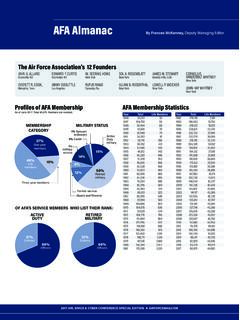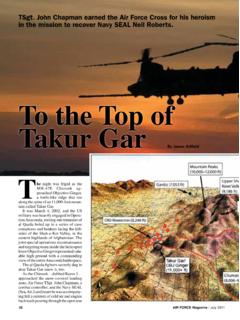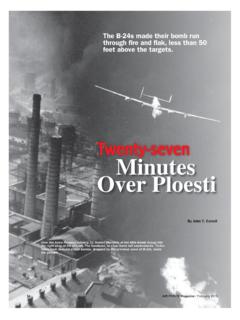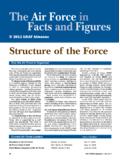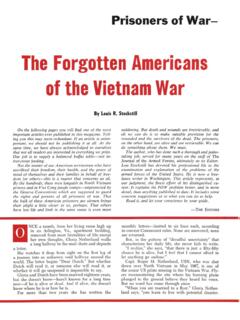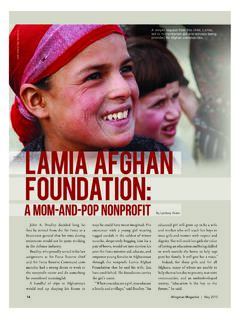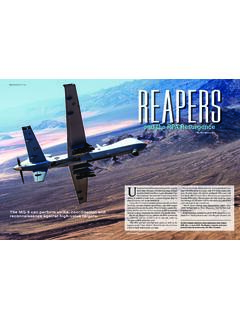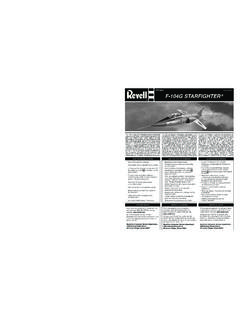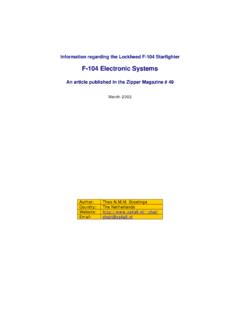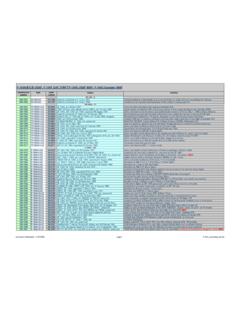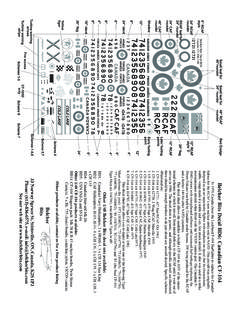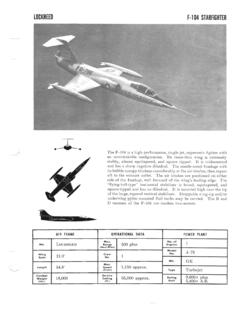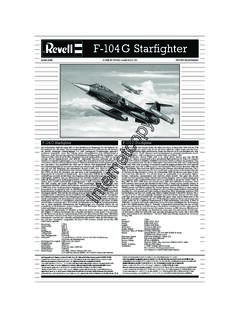Transcription of Starfighters on FORMOSA - Air Force Magazine
1 Formosan laborers in field seem almost oblivious of gleaming F-104 visible in background. Starfighters on FORMOSA John G. Norris TAIPEI, FORMOSA ONE DAY last September during the heat of the Quemoy crisis, when the question of success of the Red blockade and possible Ameri-can combat intervention hung in the balance, radar operators on both sides of the FORMOSA Strait blinked their eyes. An aircraft blip moved across their radar scopes faster than anything they had ever seen. Quick calculation showed that it was traveling twice the speed of sound. On FORMOSA , top American and Chinese Nationalist offi-cers smiled and reassured lower-ranking military men who hadn't got-ten the word.
2 The 1,400-mile-an-hour Lockheed F-104s had arrived on FORMOSA ! It was probably several days after their presence on FORMOSA was an- nounced before Red Chinese air com-manders on the mainland knew defi-nitely what their early-warning net-work had picked up moving so fast over the Strait. They, of course, knew about the F-104 starfighter some-times called the "missile with a man in it" and they must have been pretty sure that the blip was an American fighter. We can't know for sure exactly what the reaction was in Peiping. But almost certainly the arrival of the USAF's hottest interceptor influenced the Reds' decision to stay away from American planes and ships protecting outside the three-mile limit the Chi-nese Nationalist supply ships running the Red artillery blockade.
3 The pres-ence of these planes doubtless also contributed to the Reds' ultimate back-down. Red Chinese pilots, flying superior-performing MIG-17 fighters, had been taking a bad licking from Chiang's crack USAF-trained airmen flying ob-solescent North American F-86 Sabre-jets, and they hardly wanted to tangle with a plane that is more than twice as fast and holds the official world's speed and altitude records of 1,404 mph and 91,249 feet. This Peiping reaction, of course, was precisely what Washington wanted. It was the one reason why the first F-104 was rushed into the Formosan skies only twenty-four hours after it had landed on FORMOSA inside a Douglas C-124 Globemaster. Air Force me-chanics worked through the night put-ting its wings back on and getting the first starfighter ready to fly.
4 When 1st Lt. Crosley J. Fitton made (Continued on following page) 1 AIR Force Magazine January 1959 101 F-104, part of the USAF Force deployed to FORMOSA , gets going over, will be ready to "go" if warm war gets hot. Another starfighter is unloaded on the Nationalist strong- hold after airlift from US aboard Douglas C-124 transport. Starfighters ON FORMOSA CONTINUED that first flight over FORMOSA and the western part of the Strait, so soon after arrival of the partially dismantled plane, many of the military men in the know must have been surprised. One of the nice things about a fighter de-ployment overseas in this manner is that the planes arrive ready to fly ex-cept for a few things like bolting on the wings.
5 The F-104 deployment, plus other reinforcements of American muscle in the area, marked another striking in-stance in which mobile airpower and seapower was successfully employed to further American foreign policy. The earlier flight of a Tactical Air Force Composite Air Strike Force (CASF ) from California to Far East bases, the movement of a Marine Air Group from Japan to FORMOSA (and its replacement in Japan by another such group from Hawaii), the bolster-ing of the Seventh Fleet, the shipment of an Army Nike-Hercules battalion from Texas to FORMOSA , and move- ments of Pacific Air Force units in the area all contributed to the desired show of American power and deter-mination.
6 Gen. Laurence S. Kuter, Pacific Air Forces commander, views the across-the-Pacific USAF deployment in such a relatively short time as a dramatic demonstration of the rapid advance of airpower. He recalled in An interview that when he was a young pilot it took his squadron of Keystone bombers six weeks to move from the US to Panama. General Kuter praised the successful rapid movement of Century series fighters from California to bases on FORMOSA , Okinawa, and the Philippines by "young men three years out of fly-ing school" without mishap, even when they had to refuel in the air four times. Actually, the CASF deployment, commanded by Brig. Gen. Avelin P. Tacon, commander of the 831st Air Division at George AFB, Calif.
7 , could have been made even faster if the need had been great enough to justify additional risks. The first elements of the Force left August 28, arriving in the Far East on August 30 a week after the Reds opened their heavy bombard-ment of Quemoy. The first F-100s took off August 30 and arrived September 2. But there was other air strength on the scene. Some Thirteenth Air Force F-100s, based at Clark AFB in the Philippines, were at Naha, Okinawa, taking part in an air gunnery meet, when the shooting started. Within twelve hours, the first of them were in FORMOSA . In their attempt to impress the Red Chinese, the Thirteenth Air Force moved in some F-100s and F-86Ds that were almost ready for overhaul and replaced them in a few days.
8 One reason was to make a great show of Force with the limited air strength available by such movement of fast planes in and out of Formosan fields, where the traffic could easily be ob-served by the Red Chinese warning system. Ave: .:1L1 4:1Y41 To assure absolute reliability required by the tense situation, F-10 s were testflown after their arrival on FORMOSA . 102 AIR Force Magazine January 1959 While the bulk of the Air Force units deployed from the States flew in under their own power, the most dra-matic and - newsworthy part of the aerial reinforcement was the F-104 movement. TAC has made many CASF overseas training movements, and made its first possible combat deploy-ment in a similar situation when the Middle East crisis developed last sum-mer.
9 Deployment of the 83d Fighter-Interceptor Squadron was the first such emergency movement overseas of an Air Defense Command unit, which are not expected to be as mobile as TAC and SAC units. Secret orders to prepare for an over-seas move were given the 83d Squad-ron at Hamilton AFB, Calif., the day after Labor Day. The commanding officer, Lt. Col. John W. Bennett, was on leave, fishing in the north Califor-nia mountains and couldn't be reached immediately. Maj. Carl H. Leo, his executive officer, worked out plans for the deployment with Western Air De-fense headquarters and other com-mands. Military Air Transport Service pro-vided the C-124s and worked out de-tails of loading for the transpacific move.
10 For WESTAF MAT's Western Division this was only part of the big job handed it of supporting the Far East buildup. At the end of the week Colonel Bennett returned, and the squadron learned of its orders and started moving out. The first C-124 arrived at a Chinese Air Force base on FORMOSA late on September 10, the rest arriving within a week. By late in the month the unit was integrated in the joint air defenses of the island. At first there was a lack of housing. Sergeants and airmen working on the F-104s took turns sleeping in the noisy, lighted hangars as work went on around the clock to make the aircraft operational. A separate support squadron formed from Air Force personnel in the Far East was created to handle messing, medical, and other needs.
